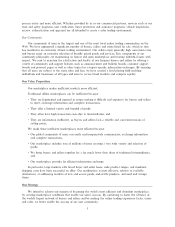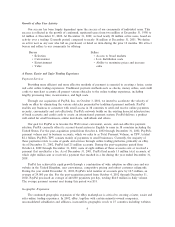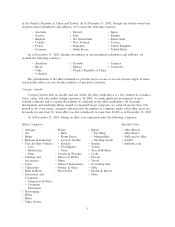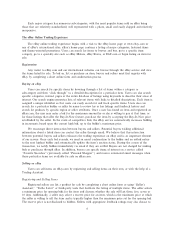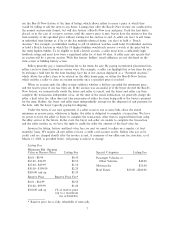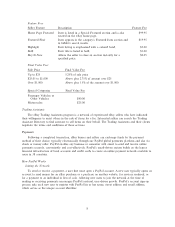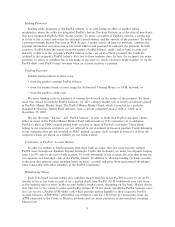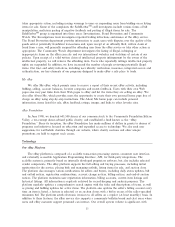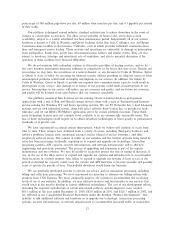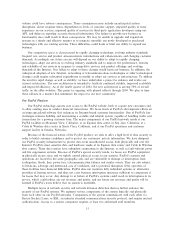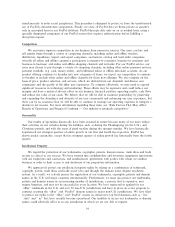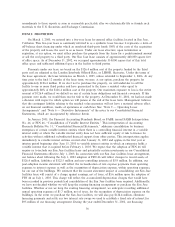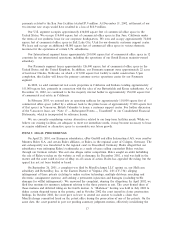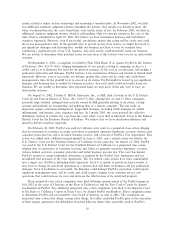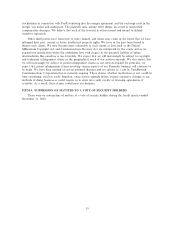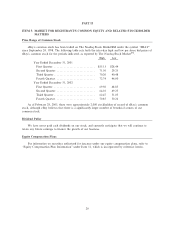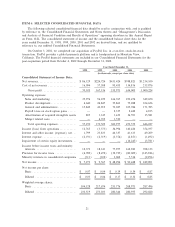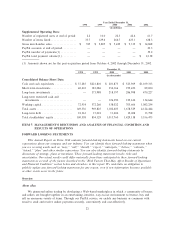eBay 2002 Annual Report Download - page 15
Download and view the complete annual report
Please find page 15 of the 2002 eBay annual report below. You can navigate through the pages in the report by either clicking on the pages listed below, or by using the keyword search tool below to find specific information within the annual report.volume could have adverse consequences. These consequences may include unanticipated system
disruptions, slower response times, degradation in levels of customer support, impaired quality of users'
experience on our services, impaired quality of services for third-party application developers using our
API, and delays in reporting accurate Ñnancial information. Our failure to provide new features or
functionality also could result in these consequences. We may be unable to upgrade and expand our
systems in a timely and eÅective manner or to integrate smoothly any newly developed or purchased
technologies with our existing systems. These diÇculties could harm or limit our ability to expand our
business.
Our competitive space is characterized by rapidly changing technology, evolving industry standards,
frequent new service and product announcements, introductions and enhancements and changing customer
demands. Accordingly, our future success will depend on our ability to adapt to rapidly changing
technologies, adapt our services to evolving industry standards and to improve the performance, features
and reliability of our services in response to competitive services and product oÅerings and evolving
demands of the Internet. Our failure to adapt to these changes would harm our business. In addition, the
widespread adoption of new Internet, networking or telecommunications technologies or other technological
changes could require substantial expenditures to modify or adapt our services or infrastructure. To address
the need for rapid change as well as stability, we have undertaken a project to enhance and evolve our
current architecture. The new architecture is intended to facilitate continued stability, improved scalability
and improved eÇciency. As of the fourth quarter of 2002, the new architecture is serving 70% of overall
traÇc on the eBay websites. This project is ongoing, with phased rollouts through 2004. We plan to time
these rollouts in a manner that minimizes the impact to our user community.
Our PayPal Platform
Our PayPal technology assures user access to the PayPal website, both to acquire new customers and
to allow existing ones to conduct Ñnancial transactions. We focus much of PayPal's development eÅorts on
creating specialized software that enhances its Internet-based customer functionality. One of PayPal's key
challenges remains building and maintaining a scalable and reliable system, capable of handling traÇc and
transactions for a growing customer base. The major components of our PayPal network reside at our
PayPal facilities in Mountain View, California, at an Equinix data center in San Jose, California, at a
Cable & Wireless data center in Santa Clara, California, and at our PayPal operations and customer
support facility in Omaha, Nebraska.
Because of the Ñnancial nature of the PayPal product, we seek to oÅer a high level of data security in
order to build customer conÑdence and to protect our customers' private information. We have designed
our PayPal security infrastructure to protect data from unauthorized access, both physically and over the
Internet. PayPal's most sensitive data and hardware reside at its Equinix data center and Cable & Wireless
data centers. These data centers have redundant connections to the Internet, as well as fault-tolerant power
and Ñre suppression systems. Because of PayPal's special security needs, we house our PayPal equipment
in physically secure areas and we tightly control physical access to our systems. PayPal's systems and
operations are located in the same geographic area and are vulnerable to damage or interruption from
earthquakes, Öoods, Ñres, power loss, telecommunication failures and similar events. They are also subject
to break-ins, sabotage and intentional acts of vandalism, and to potential disruption if the operators of
these facilities have Ñnancial diÇculties. PayPal does not maintain fully redundant systems or alternative
providers of hosting services, and does not carry business interruption insurance suÇcient to compensate it
for losses that may occur. Any damage to or failure of PayPal's systems could result in interruptions in its
service, which could reduce our net revenues and proÑts, and our future net revenues and proÑts will be
harmed if PayPal's users believe that its system is unreliable.
Multiple layers of network security and network intrusion detection devices further enhance the
security of our PayPal systems. We segment various components of the system logically and physically
from each other on our PayPal networks. Components of the system communicate with each other via
Secure Sockets Layer, or SSL, an industry standard communications security protocol, and require mutual
authentication. Access to a system component requires at least two authorized staÅ members
13


